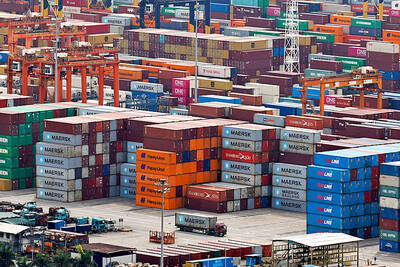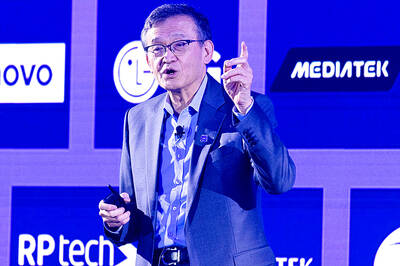Forget rummaging through the junk drawer. Soon, Europeans are only to require one cable to charge their smartphones and other devices.
EU officials said they signed a provisional agreement on Tuesday that would require a uniform charging cord in the 27-nation bloc.
It is part of a wider effort to make products sold in the EU more sustainable and reduce electronic waste.
The new rules, which are to take effect by the fall of 2024, mean EU consumers would only need to use a common USB Type-C cable for small and medium-sized rechargeable, portable electronic devices.
“European consumers were frustrated with multiple chargers piling up within their homes,” Alex Agius Saliba, the European Parliament’s lead negotiator, told a news briefing in Brussels. “Now, they will be able to go with a single charger for all portable electronics, which is an important step to increase consumer convenience.”
The devices covered include mobile phones, tablets, e-readers, earbuds, digital cameras, headphones and headsets, handheld videogame consoles, keyboards and mice, portable speakers and navigation devices.
Laptops also are covered, but manufacturers would have extra time to comply.
The rules apply only to devices sold in the European single market, which consists of 30 countries. However, as with the EU’s strict privacy regulations, they could end up becoming a de facto standard for the rest of the world.
While many electronics makers have started adopting USB-C sockets, Apple Inc has been one of the main holdouts.
Apple, which did not respond to a request for comment, has previously said it is concerned the rules would limit innovation and hurt consumers.
The company’s iPhones come with their own Lightning charging port, although newer models include cables that can be plugged into a USB-C socket.
The EU rules also outline standards for fast-charging technology and give consumers the right to choose whether to buy new devices with or without a charger, which the EU estimates would save consumers 250 million euros (US$268 million) a year.
Reducing electronic waste is another goal. The EU estimates disposed or unused chargers account for 11,000 tonnes of e-waste in Europe every year.
“One in every three chargers that is bundled with these products is never opened from its original packaging,” according to an impact assessment from the European Commission, the bloc’s executive arm, Saliba said.
To keep pace with the latest advances, there are also provisions to draw up standards further down the line for wireless charging, which is seen as the next leap forward for charging technology, Saliba said.
The EU spent more than a decade trying to cajole the electronics industry into adopting a common charging standard, an effort that whittled different charging plugs down to a handful until the commission forced the issue with draft legislation in September last year.
The European Parliament and European Council are expected to give formal approval to the agreement after the summer break.

The Eurovision Song Contest has seen a surge in punter interest at the bookmakers, becoming a major betting event, experts said ahead of last night’s giant glamfest in Basel. “Eurovision has quietly become one of the biggest betting events of the year,” said Tomi Huttunen, senior manager of the Online Computer Finland (OCS) betting and casino platform. Betting sites have long been used to gauge which way voters might be leaning ahead of the world’s biggest televised live music event. However, bookmakers highlight a huge increase in engagement in recent years — and this year in particular. “We’ve already passed 2023’s total activity and

Nvidia Corp CEO Jensen Huang (黃仁勳) today announced that his company has selected "Beitou Shilin" in Taipei for its new Taiwan office, called Nvidia Constellation, putting an end to months of speculation. Industry sources have said that the tech giant has been eyeing the Beitou Shilin Science Park as the site of its new overseas headquarters, and speculated that the new headquarters would be built on two plots of land designated as "T17" and "T18," which span 3.89 hectares in the park. "I think it's time for us to reveal one of the largest products we've ever built," Huang said near the

China yesterday announced anti-dumping duties as high as 74.9 percent on imports of polyoxymethylene (POM) copolymers, a type of engineering plastic, from Taiwan, the US, the EU and Japan. The Chinese Ministry of Commerce’s findings conclude a probe launched in May last year, shortly after the US sharply increased tariffs on Chinese electric vehicles, computer chips and other imports. POM copolymers can partially replace metals such as copper and zinc, and have various applications, including in auto parts, electronics and medical equipment, the Chinese ministry has said. In January, it said initial investigations had determined that dumping was taking place, and implemented preliminary

Intel Corp yesterday reinforced its determination to strengthen its partnerships with Taiwan’s ecosystem partners including original-electronic-manufacturing (OEM) companies such as Hon Hai Precision Industry Co (鴻海精密) and chipmaker United Microelectronics Corp (UMC, 聯電). “Tonight marks a new beginning. We renew our new partnership with Taiwan ecosystem,” Intel new chief executive officer Tan Lip-bu (陳立武) said at a dinner with representatives from the company’s local partners, celebrating the 40th anniversary of the US chip giant’s presence in Taiwan. Tan took the reins at Intel six weeks ago aiming to reform the chipmaker and revive its past glory. This is the first time Tan